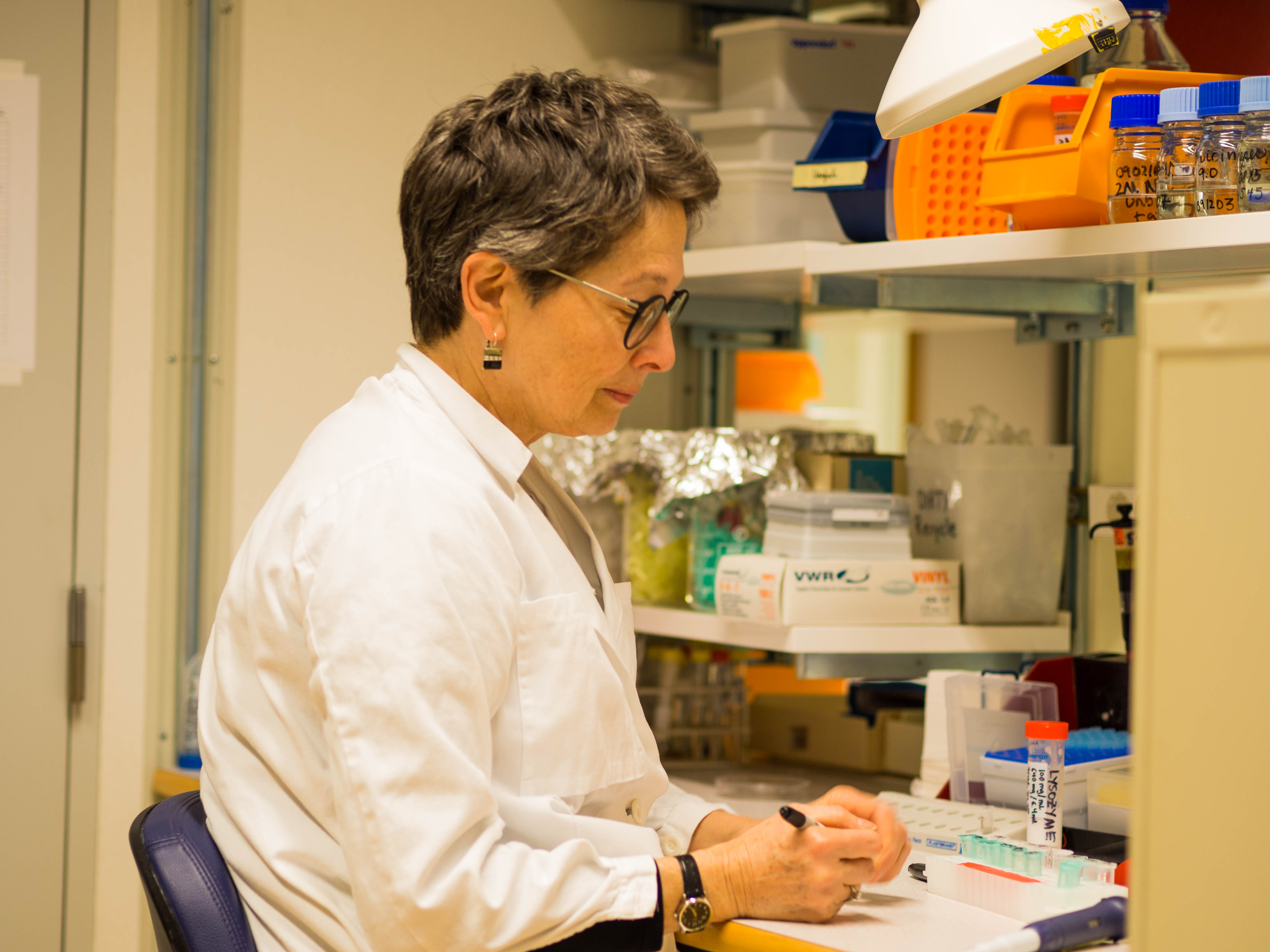synonyms: coacervation, two-phase partitioning, liquid-liquid phase separation
Phase separation: good or bad?
The occurrence of phase separation in the drop is like precipitation in the following sense. Both are seen in the supersaturated part of the phase diagram. You do not necessarily try to get precipitation in order to get crystals, but sometimes it is necessary or inevitable that you get some precipitation before crystals grow. Of course if you can get the crystals without precipitation first that is to be preferred. The same is true for phase separation, but generally I consider phase separation a promising starting point. Try optimizing around the conditions where you are getting this phase separation.
To quote McPherson [1] “While it is generally not advisable to encourage the formation of precipitate or any other phase, prior to crystal nucleation, sometimes it is the only way to obtain crystals at all.” I believe this applies to phase separation as well.
Reference [3] is an example of deliberate phase separation inducement, in order to get the crystals to nucleate. Little research has been done around deliberate inducement of phase separation as a means of crystallization (I only found two references in the literature), so it may be a path worth exploring further.
Bergfors, T., Editor. Protein Crystallization: Second Edition. 2009. International
University Line, La Jolla, California, 500 pp.
What causes it?
Multiphasic mixtures (phase separation) can occur when:
- Small amounts of salt are added to PEG or MPD.
- Small amounts of organic solvents (like MPD or PEG; more suggestions are given below) are added to highly concentrated salt solutions.
In 1, the salt is said to be the cosolute.
In 2, the organic solvent is the cosolute.
A partition occurs between the cosolute and the solute, leading to coacervate droplets forming within the drop. The partitioning is due to the insolubility of one of the solutes in the other.
Example:
8% v/v MPD was added to 64% saturated ammonium sulfate (AS), leading to a phase separation. After phase separation, the salt-rich phase was found to contain 36% AS and 2% MPD. The MPD-rich phase contained no AS. The crystals (of bovine seminal ribonuclease) grew in the AS-rich phase [2].
The composition of the phase separation in this example is described as the cosolute-rich phase (i.e. the MPD) and the salt-rich phase (i.e. the AS).
What effects does this partioning of the two solvents have?
It seems to have two effects:
1. It can give rise to very high protein concentrations.
Often the protein will tend to concentrate more in one of the phases than the other. This can lead to extremely high protein concentrations and subsequently, very high states of supersaturation. The literature reports up to 100-fold increase in the protein concentration.
Example:
At low protein concentration, the concentration in the cosolute phase increased 20X.
At high protein concentration (5 mg/ml), the concentration in the cosolute phase increased to 500 mg/ml (i.e. 100X).
Supersaturation is a requirement for crystallization. Therefore it is possible to get crystals from phase separation.
However, this can present problems when mounting the crystals. The protein concentration is not known and probably very high. Be sure to include some protein solution with the mother liquor when mounting the crystal.
2. It creates a boundary between the two solvents that serves as a nucleation center.
The crystals grow at the boundary of the two phases.
It is not just the fact that the protein becomes extremely concentrated in one of the phases which leads to crystallization. (The proteins do not always become more concentrated in one phase, see below.) The fact that the crystals do seem though to always appear at the boundary of the two phases indicates that it is some component from the other phase which acts as a “phase transfer catalyst” for the nucleation or that the interface itself has some sort of property which catalyzes nucleation.
Either of the phases can support crystal growth once the crystals get growing. You can see the crystal growing out from the droplet or into the droplet of phase separated liquid.
Does phase separation always lead to a greater concentration of protein in one of the two phases?
No. It will depend on how soluble the protein is in the two different solvents. If the protein is more soluble in one phase than the other, it will concentrate in the one where it has the greatest solubility.
In the example of bovine seminal [2], there was no increase in protein concentration in either of the two phases. (Starting protein concentration was l0 mg/ml). Still, nucleation occurred at the boundaries between the two phases. Thus, phase separation can still have a positive effect on inducing nucleation even if the protein does not become more concentrated.
Which of the two phases does the protein concentrate in?
Usually, but not always, it concentrates in the cosolute-rich phase.
For 9 proteins tested in [3], 8 of them partitioned into the cosolute-rich phase.
Can you give some more examples of solutions which cause phase separation?
Reference [2] below created a multi-phasic drop with the following:
62-66% saturated AS with 4-10% v/v PEG 200, 400, 600
62-66% saturated AS with 6-10% v/v MPD
In you want to induce a phase separation in your drop, reference [2] recommends trying the following with the mixture of high salt + peg/mpd:
1. raise the temperature* (e.g. from 4 to 25 C).
2. increase the molecular weight of the PEG
3. use more hydrated ions i.e. use Na+ instead of NH+4 or sulfate instead of Cl-
Example (from reference 3):
53% saturated AS + 5.9% PEG 400 at 4C is mono-phasic. Warming to 25 C produces PEG-rich coacervate
droplets which contain 16% AS + 37% PEG.
*There are exceptions to everything, of course. Raising the temperature does not ALWAYS give rise to a phase separation. Sometimes, it does just the opposite, i.e. raising the temperature gets RID of a phase separation. The presence of detergents will also affect the temperature sensitivity of the phase separation.
EXAMPLE: Xylanse crystals were grown in PEG 4000 at 22 C. New drops were set up to test co-crystallization of the protein with its substrate xylan. Addition of 0.5% xylan to the crystallization mother liquor however gave rise to a phase separation of the substrate and mother liquor. Warming the crystallization drop to 50 C for 15 minutes eliminated it. (Before you try this on your protein, make sure it is stable at this temperature.) This worked for the low, 0.5% concentration of xylan, but not so well at higher substrate concentrations (i.e. 1-5%). [See reference 4].
What organic solvents besides PEG and MPD can I try as additives to high salt to induce phase separation?
Reference [3] gives these suggestions (use 2-5%). They induced phase separation in 53% saturated ammonium sulfate at room temperature (but did not give crystals).
- ethanol
- ethylene glycol
- mono and dimethyl ethers of ethylene glycol
- diethylene glycol monomethyl ether
- tetrahydrofuran
- dioxane
In general, look for a cosolute that:
- is marginally insoluble at high salt concentrations, or
- will act together with water to produce ionic compounds that are only moderately soluble.
How can I prevent phase separation?
Somtimes people want to prevent the phase separation,for example, it is causing problems in mounting the crystals. Try reducing either the protein or precipitant concentration, or of course, changing the temperature as described above.
Where can I read more?
[1] McPherson, Alexander. Crystallization of Biological Macromolecules. 1999. Cold Spring Harbor Press, New York. p. 424.
[2] Sica F. et al. Cosolute effect on crystallization of two dinucleotide complexes of bovine seminal ribonuclease from concentrated salt solutions. J. Crystal Growth 1996, 168: 192-197.
[3] Ray WJ and Bracker CE. Polyethylene glycol: catalygic effect on the crystallization of phosphoglucomutase at high salt concentration. J. Crystal Growth 1986, 76: 562-576.
[4] Barba de la Rosa, Ana et al. Crystallization of xylanse from Erwinia chrysanthemi: Influence of heat and polymeric substrate. Acta Cryst. 1997: D53, 256-261.




